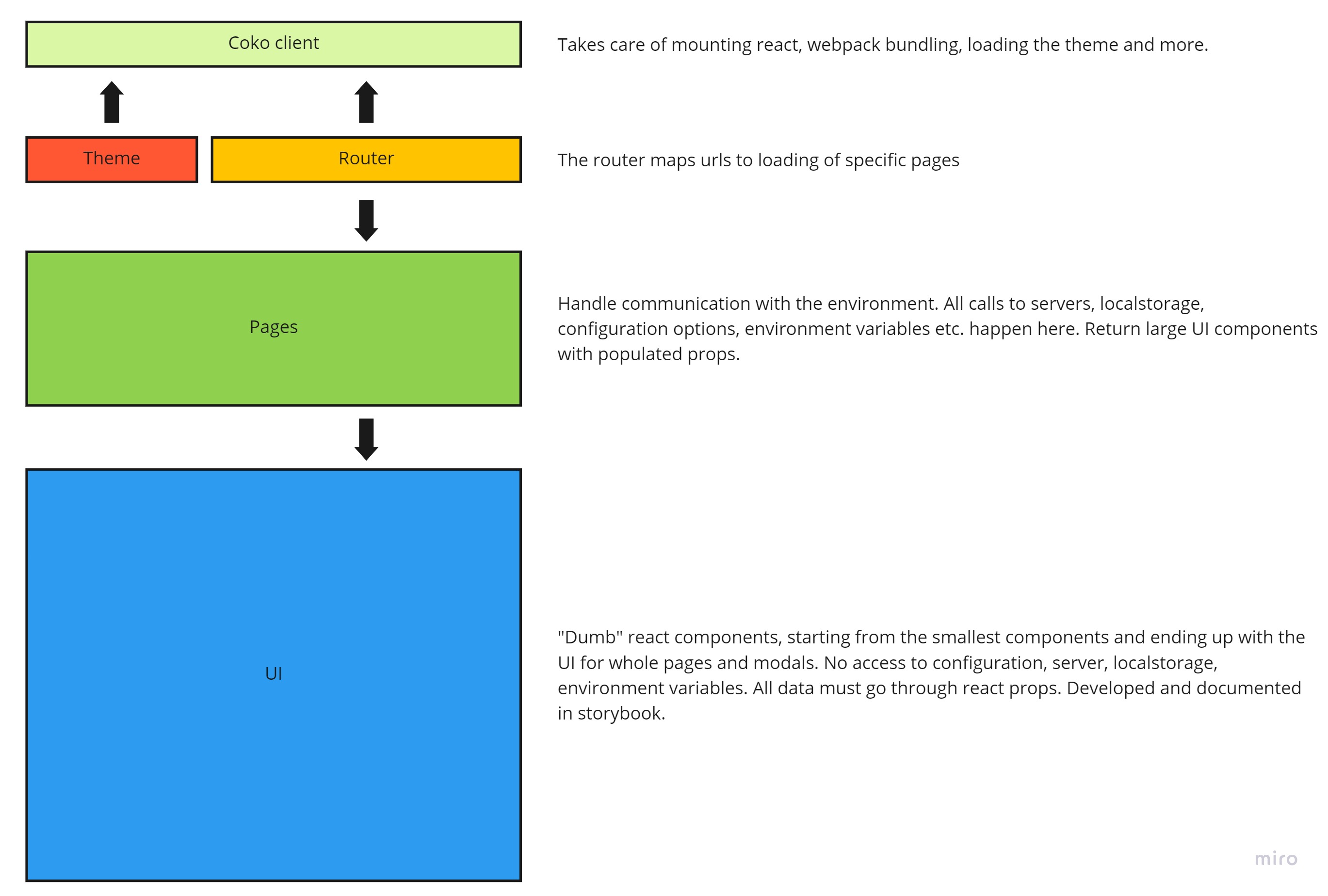Client architecture

The different layers of our client-side architecture are shown in the diagram above:
Coko client
@coko/client (which under the hood brings together all the pubsweet client-side
libraries, as well as some extra niceties) will take care of most of the heavy
lifting when it comes to infrastructure. The client needs to be fed the routes
and the theme, and it will take care of the theme being provided in all your
components, mounting react on the root component, webpack compilation and more.
Check the client docs for more details.
Theme
This is pretty straightforward. All the theme values and application-wide
overrides that apply to your components need to exist here. The theme is a single
javascript file that can be named whatever you want (but is by convention named
theme.js). You can spread your theme code across mutliple files, as long as it
all comes together in a single export at the end.
Router
The router (by convention a single file called routes.js) will map the different
routes in your app to pages. It should only interact with pages (as defined below)
and not with UI components directly.
Pages
Pages are react components that wrap the UI react components and make sure the UI's props are populated correctly. They essentially act as intermediaries between the UI and anything else. Some common tasks that would happen in pages are:
- Graphql queries, mutations and subscriptions
- Accessing configuration options
- Accessing environment variables
- Interaction with localstorage
- Reading permissions
It is the page's responsibility to perform any necessary data manipulation and pass only the minimum amount of information needed to the UI.
It is most common that you'd have a single page component for each actual page of your app.
UI
These are the react components that take care of the UI. They are "dumb" in the
sense that they do not know anything about their environment, they only know
their props. For example, a function that gets passed to be performed on a click
could be a server call, a localstorage interaction or a console.log. The UI
components do not care about that, they just run the function you passed through
the props.
No interaction should happen outside of their props. Any necessary interaction should bubble up to the page component.
All UI components, from the smallest icon to large scale components, should be developed and documented in storybook. Their interactions with parent components or the page component should be mocked in the component's stories file.